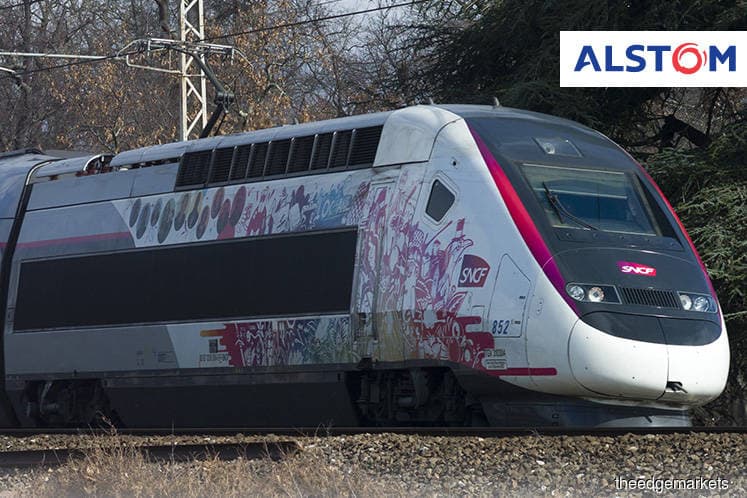
This article first appeared in The Edge Financial Daily on November 27, 2017
KUALA LUMPUR: France’s Alstom SA is preparing to participate in the tender for the Kuala Lumpur-Singapore high-speed rail (HSR) project, says its vice-president of systems platform Eric Marie.
“We are aware of the project and we will decide [on our plans] once the tender has been issued. We’re still working on our strategy, and so it is difficult at this stage to answer [the type of trains we will propose],” he told Malaysian journalists at the group’s headquarters in Paris, France recently.
“There are some requests from the customer (MyHSR and LTA). They know what the available systems are and they are preparing the tender. What we are waiting for is to see the tender documents, to see what is requested and based on the tender documents then we can decide what the best adapted solutions are in order to fit with the requirements of the customer,” said Marie.
Alstom was among 165 local and international firms reported to have sent their representatives for a briefing jointly organised by MyHSR Corp Sdn Bhd and Singapore’s Land Transport Authority (LTA), on the Kuala Lumpur-Singapore HSR project in Singapore in July.
The group sees no issues in exporting its home-grown high-speed technology and operational know-how here, Marie said, noting that Alstom has participated in HSR projects in South Korea and China.
“We have been working in almost every part of the world, and so we know how to address this type of specifics with its terrain and humidity. We don’t see any specific environmental condition in Malaysia that is difficult to achieve. For sure, it would be proven technology that we will propose,” he added.
The group is also unfazed by the fierce competition from China and Japan, which had signalled their intent to bid for the HSR project.
“There is always competition in every tender. But you have also to consider that all these tenders are complex. Each time you go for a turnkey project or a Public Private Partnership project, you have to work with lawyers and financing arrangers; you have to study all the systems [and find one suitable for the project].
“These tenders are expensive and this is why each time we have a process to study the tender and decide whether we want to go on. For us, the fact that we have been working on significant projects where we make a commitment to maintenance [of the systems as well] is very important because when you are committed for 20 [year] to 30 years, the way you design the systems is very important. You really need to understand what is going to happen in the industry over the next 10 years.
“And you need to ensure that the customers (asset owners) and passengers are not going to be affected by any change. You need to always maintain a safe [urban transport] system including rectification works that you need to do. Take ticketing for example. Twenty years ago you had physical tickets. Today, almost all the cities are using contactless technology for tickets. So, the system that we sell need also be adaptable to this type of evolution,” he explained.
Alstom deputy vice-president of mainline platform Laurent Jarsale said another important aspect to consider is the assets company’s (AssetsCo) project management experience.
“It is one thing to have a product, but another is your skill in project management. At the end of the day, the confidence that we give our clients is actually delivering the system on time, with the right performance. In fact, in each of our projects, we have been delivering either on time or ahead of schedule. We delivered the project in South Korea a month earlier than planned and for China, it was six months.
“Another aspect is our ability to deliver export projects. It is one thing to deliver a project in your country, but another thing to deliver and adapt it according to the local conditions and the needs of the operator. We have many new competitors in Asia with no experience in HSR construction or operation. All of these will be taken into account by the Malaysian and Singaporean clients (MyHSR and LTA),” noted Jarsale.
Today, Alstom has sold 1,485 high speed trains in 21 countries.
Slated to be in operation by the end of 2026, the 350km Kuala Lumpur-Singapore HSR is estimated to cost RM60 billion and is expected to cut travelling time between the two cities to under 90 minutes.
On Nov 20, MyHSR chief executive officer Datuk Mohd Nur Ismal Mohamed Kamal said the tender to appoint the project delivery partner (PDP) for the project will be called on Nov 22.
The PDP and AssetsCo tenders are two major procurement exercises at this current stage of the Kuala Lumpur-Singapore HSR project. Both tenders are expected to be completed in 2018. The PDP tender focuses on the civil infrastructure portion of the project, while the AssetsCo tender, expected to be launched by end of this year, focuses on systems and trains, said MyHSR Corp.
Signalling, systems, and services accounted for 57% of Alstom’s total sales of €3.8 billion (RM18.65 billion) in the six months ended Sept 30, 2017, which is in line with the group’s 2020 objective of 60%. The remaining 43% came from rolling stock sales.
“The overall HSR market is growing in tandem with the population in the cities across the world. You have more and more congestion issues in cities, and so you see there is a trend for urban transport systems everywhere. The challenge of cities is the financing for this type of projects,” said Marie.